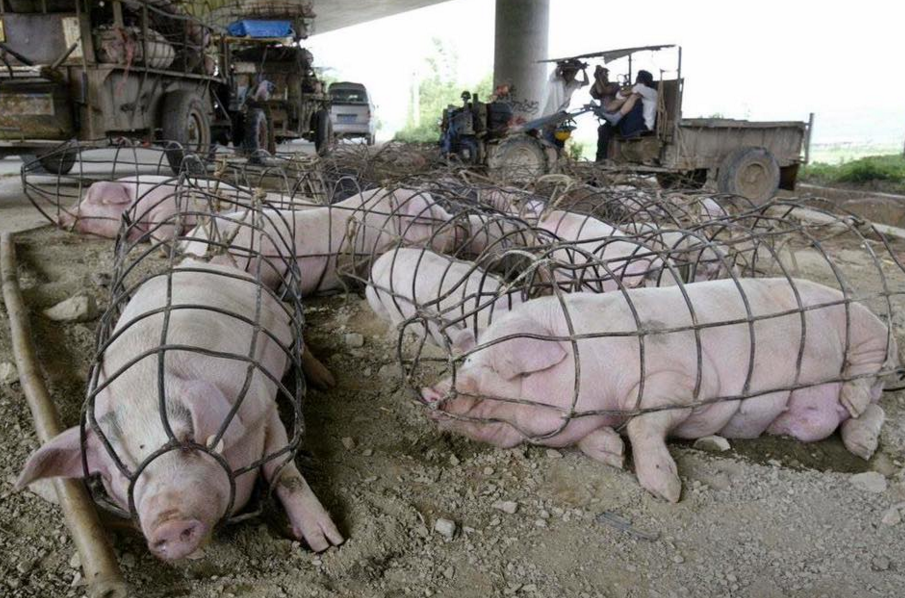In January 2016, a photograph purportedly showing the cruel living conditions of pigs in the United States began recirculating online:
So you don't want to hear about the truth... That's ok. I will show you. Pig crates. This is where your bacon comes from. Try spending your entire life in one of these. You're welcome.
This image was taken in China in 2007. According to Reuters, the photograph also does not show the living conditions for these animals -- what is shown are temporary cages used to transport the pigs to market:
Pigs are prepared for transportation to a market in Baizhu county of Zhaoqing, southern China's Guangdong province May 8, 2007. A mysterious disease has killed thousands of pigs in China's southern Guangdong province and authorities have disinfected affected farms, markets and abattoirs, several Hong Kong newspapers reported on Monday. REUTERS/Stringer (CHINA) CHINA OUT
While the image was not taken in the United States and does not depict the permanent living conditions of pigs on factory farms, the actual living conditions on factory farms are not much better. The American Society for the Prevention of Cruelty To Animals writes that pigs are commonly kept in over-crowded windowless sheds:
The U.S. raises some 100 million pigs for food each year, virtually all in factory farms. Industrial-scale pig farms are known for their intensive, inhospitable conditions. At just two to three weeks old, piglets are removed from their mothers and placed in large, windowless sheds without fresh air, sunlight or outdoor access. Their pens are too small and crowded for adequate movement and exercise. Ammonia fumes rise to dangerous, uncomfortable levels due to the pigs’ waste.
While the majority of the pig population is kept in sheds like these, a 2014 report from the Humane Society noted that pregnant pigs are kept in smaller "gestation crates":
Yet on U.S. factory farms, where sows are kept in row after row after row of gestation crates throughout their pregnancies, they're also among the most abused. The 2-foot-wide cages are so narrow, the animals cannot even turn around. They chew on the bars, wave their heads incessantly back and forth, or lie on the pavement in an apparent state of dejection. Nearly immobilized, the pigs spend months staring ahead, waiting to be fed, likely going out of their minds.
For a brief period while and after they give birth, they are placed in slightly larger farrowing crates, but they still can't turn around. Then their piglets are taken away and the sows are impregnated once more, returned to gestation crates to start the entire cycle of misery again.
For decades, most U.S. pork producers have raised pigs this way. But the tide is starting to turn as scientists, voters, lawmakers and retailers reject extreme forms of farm animal confinement.
While a handful of states in the US have banned gestation crates and others have vowed to phase out the practice, the majority of the United States still allows their use.
While the above-displayed photograph was not taken in the United States and does not depict the permanent living conditions of pigs on a factory farm, it is true that the living conditions of pigs on farms in the United States has been dubbed "inhospitable" and "cruel" by several organizations.


